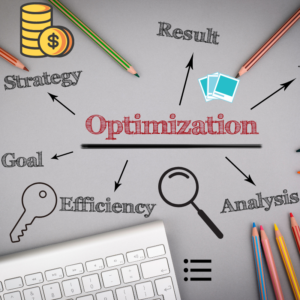2022 Guide to Amazon Algorithm
When selling on Amazon and to be successful you need to understand Amazon’s Algorithm. Basically, If your product isn’t relevant or does not convert well, the Algorithm won’t show your product.
Amazon doesn’t reveal its actual algorithm, but some of its features are publicly known. For instance, item prices play a major role in the company’s ranking algorithms because Amazon wants to provide as much information as possible about products to its customers, and pricing information is critical for making informed decisions about which purchase is best for them.
In this article, we are going to explore how Amazon’s algorithm works. We will see how it evolves with the company’s needs and how it impacts what people see in their search results.
What is the Algorithm?
Amazon algorithm is the data-driven and machine learning-powered system that determines what customers see on their site. It is designed to serve high-quality and relevant product recommendations. Amazon’s algorithms take into account a number of factors, including the history of purchases, wish list items, browsing patterns, social connections, post-purchase feedback, and more.
The algorithm is the brain that makes up the majority of Amazon’s customer experience. It controls what they see and how they find it, and has a huge impact on what customers purchase.
Amazon’s algorithm looks for every customer’s individual preferences in order to show them items that are highly personalized according to their browsing history. It also works to understand how shoppers move through the site and where a product ranks in relation to other products on Amazon.
So the algorithm likes conversions. Conversions show Amazon that the product the client bought was what really what they searched for.
Note – The algorithm takes into account many variables, including sales and historical performance on Amazon, customer reviews, and prices offered by other sellers.

Importance of Keywords
Keywords are a combination of words that a customer may use to search for products on Amazon. They can be based on the customer’s search history, which can help the Amazon algorithm to determine what they are most likely interested in. The more keywords a product has, the higher it will rank on the search results page. This way, you will be able to reach a larger audience and sell more products, which means you have a better chance of creating competitive advantages
The Amazon algorithm is complex, but one thing we know for sure is that it has a big impact on where your products are placed in search results and how much traffic they get from users.
Without appropriate keywords, there is no visibility of your product on Amazon or any other digital platform.
You might think about investing in keywords for important terms for your business.
Sales Conversions
The algorithm at Amazon wants its site to consist of products with high levels of search, view, and purchase. This is a natural way to rank these items.
Although Amazon does not have a specific “target” conversion rate you should direct for, you want it to be as high as possible. To do so ensure your listings are optimized for conversions. ( optimize your title, images, bullet points, description, and A+ content. Also, grow your review count.
Increasing your sales conversions will increase the number of times your listings appear on search engines, which will lead to higher rankings. This is good for business in two ways: it means more traffic and higher conversions.

What are the ways to ensure your listings are optimized?
First off, make sure your text is persuasive and conveys to potential buyers exactly what you’re selling and why it’s beneficial to them. That will inevitably lead to them making a purchase. Even though text is very important you need to remember that most buyers make the decision to purchase very quickly.
Most buyers make that decision even though they did not read the whole listing, they have made their minds after seeing the title, price, and images.
So for this reason it is important to optimize your images, using high resolution and allowing the zoom function.
After you have ensured the listings are optimized for KWs and conversions you will need to monitor them and their performance.
Summary
After reading this blog I hope that you have a better understanding of how the algorithm works and what you can do to ensure your products are relevant.